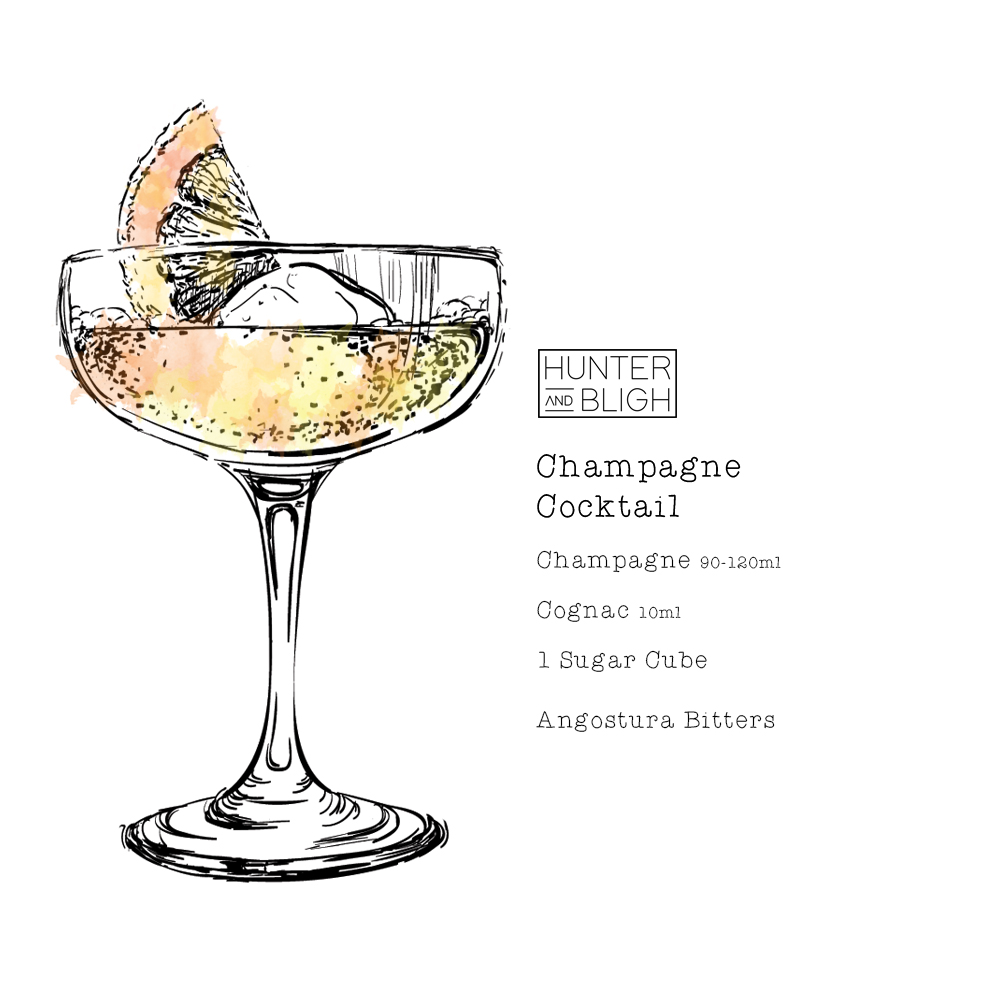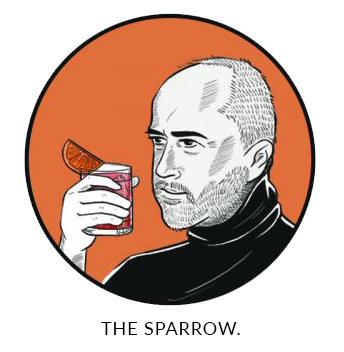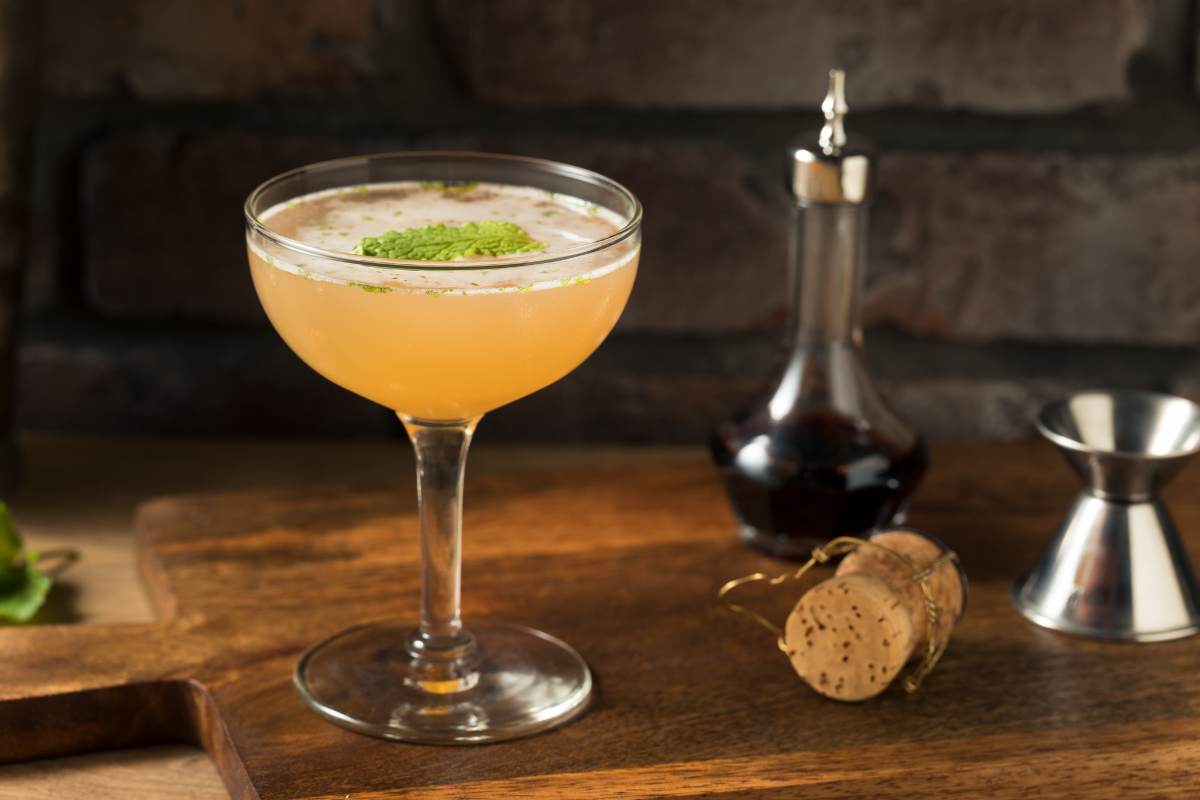The modern version of the classic champagne cocktail contains a sugar cube soaked in bitters with a spot of cognac, then topped with champagne.
However, most of the early records do not have the cognac. It is one of those very early cocktails that dates back probably 150 to 200 years. It is mentioned in a book on the Panama railways published in 1855 where it is served in a tumbler and includes champagne, bitters and sugar over crushed ice.
RECIPE
I read one recipe that places the sugar cube on a tissue or napkin over the glass. As you impregnate the cube with bitters the tissue dissolves and the cube drops. I like the idea of the theatre of this but the risk of a bit of tissue landing in your glass seems too great.
90 – 120ml of champagne (not fizzy wine or prosecco)
10ml approx. of cognac (optional)
1 sugar cube
Angostura bitters

Place the cube in the bottom of a chilled champagne glass (bowl if possible). Soak the cube with bitters then top up with champagne. It is better to pour the champagne slowly as the cube will increase the bubbles as it dissolves which will flatten your champagne too quickly. Most recipes including cognac have it added at the end. Orange or lemon peel can be added as a garnish and/or a maraschino cherry (if using a champagne bowl a cherry with the stalk may be better but definitely without the stalk if using a flute). Our old friend Harry Craddock from the Savoy wrote in 1930 to “squeeze on top a piece of lemon peel, and serve with a slice of orange.” Harry also advocated a wine glass with a lump of ice.
The first recipe I can find including cognac dates from the late 1930s so it is likely Hemingway’s version did not have it.
Hemingway
The champagne cocktail appears in Hemingway’s second “proper” novel, A Farewell to Arms published in 1929 and set in First World War Italy. It is one of my top three Hemingway novels along with Fiesta: The Sun Also Rises (1926) and For Whom the Bell Tolls (1940). Our hero Frederic Henry is sitting in a bar when he is told Count Greffi is looking for him. He is 94 years old and having drank three champagne cocktails the previous night then beating the barman at billiards, he is looking for someone to play.
He “was an old man with white hair and mustache and beautiful manners.”
“…while we played billiards we drank champagne. I thought it was a splendid custom.”
The drink also shows up in The Fifth Column, written in 1937, set in the Spanish civil war and Hemingway’s only published play.
Dorothy had exchanged pesetas at 50 to the dollar in Paris and she has bought a fox fur cape for 1200 pesetas. Philip is angry as this represents four month’s pay for someone in the brigades. “I don’t believe I know any one (sic) who’s been out four months without being hit – or killed.” “You are doing quite well out of the war, aren’t you?” he tells her.
It is a sophisticated cocktail and is mentioned when Dorothy relates a daydream to Phillip. Dorothy imagines what they could do if they were in Paris. “I meet you in the Ritz bar, and I’m wearing this cape…You order a whiskey with Perrier, and I have a champagne cocktail.”
Me
It is likely when handed one of these at a party or function you may be holding something containing a fizzy white wine such as a prosecco, but if at all possible please make sure you drink this with champagne. Non-vintage Moet or Mumm will do. It is probably not worth going all out on a super expensive vintage, but you will feel the difference with quality dry champagne and a decent cognac.



